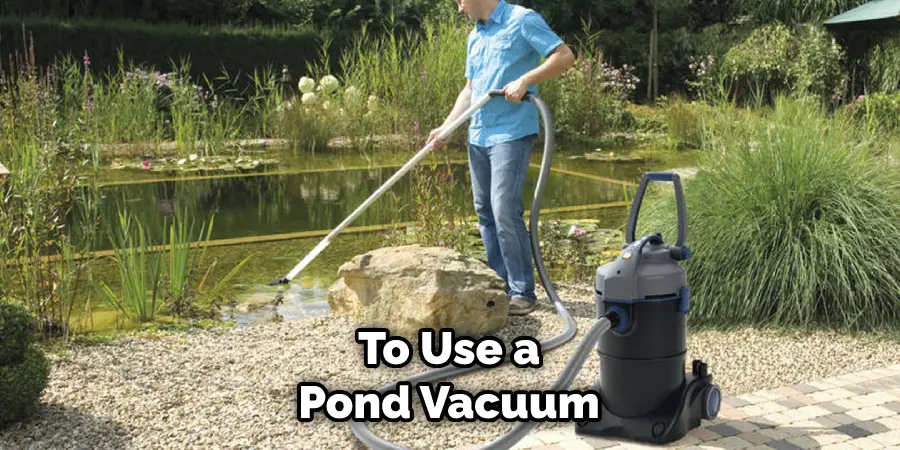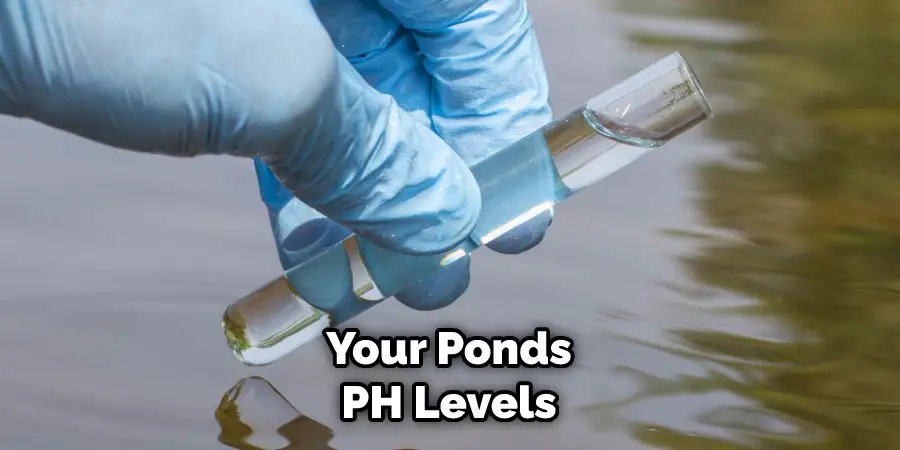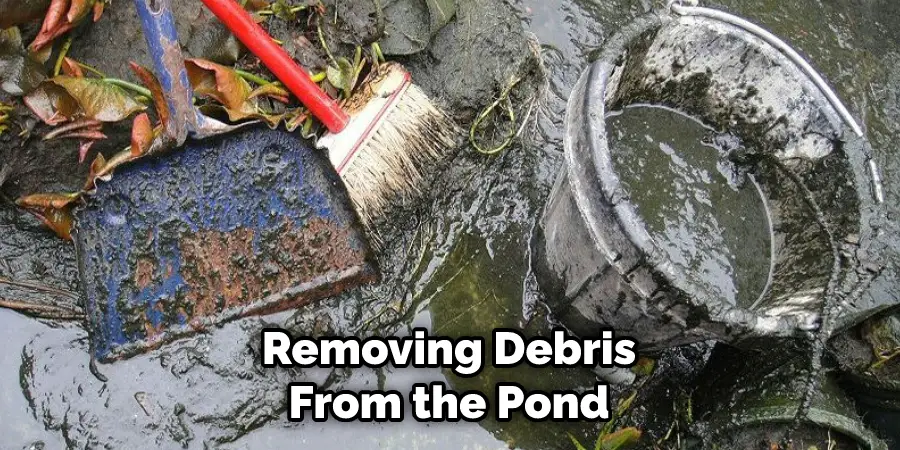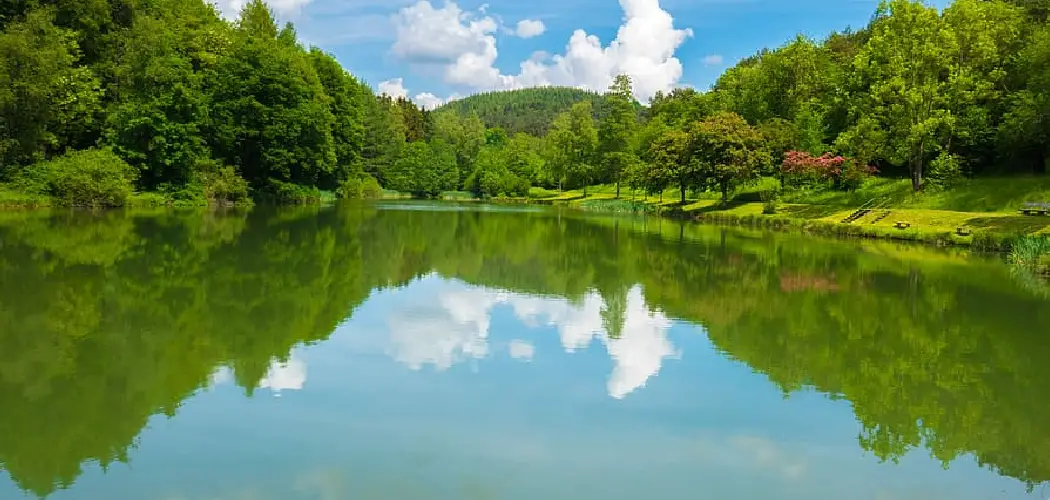Are you a proud pond owner faced with the frustrating challenge of your pond’s murky, cloudy water? Yes – while it can be worrying to look out into an uninviting greenish soup in lieu of a beautiful clearing, don’t despair; there is hope!

Clearing your pond water will take some time and effort on your part, but we’ll guide you through each step necessary for restoring the clarity and beauty of your spectacular outdoor oasis.
From identifying what may have caused the cloudiness, to ways of cleaning up naturally-occurring buildups or potentially dangerous contaminants, this blog post provides all the essential information that any responsible owner needs to know about how to clear cloudy pond water.
Having a pond in your backyard is incredibly rewarding, however, sometimes cloudy pond water can distract from the natural beauty of this addition to your landscape.
We understand how frustrating pond maintenance can be; you want to enjoy the peacefulness and serenity that comes along with having a pond, but instead, you’re dealing with an issue that detracts from those feelings. Fortunately, there are several steps you can take to try and clear up cloudy water in your pond.
Here, we will explore different methods for tackling both simple causes of murky water as well as more complex issues so you can get back to enjoying the view of your beautiful waterscape!
Why is It Important to Clear Cloudy Pond Water?
1. To Prevent Algae Growth
Cloudy water encourages the growth of algae, which can be harmful to your pond’s fish and other aquatic life. By clearing the water, you can prevent algae bloom from occurring. Also, this will help keep the water clean and reduces water toxicity caused by decaying organic material.
2. To Enhance Aesthetics
Nobody wants to look at a murky, cloudy pond! While this is not necessarily a health hazard, it can be an eyesore and really detract from your garden’s beauty. By clearing up the water in your pond, you can maintain the aesthetics of your garden and keep it looking nice.
3. To Improve Oxygen Levels
Cloudy water can lead to a decrease in oxygen levels, which is harmful to aquatic life. By clearing up the cloudy water, you can increase the oxygen levels in your pond and ensure that your fish have enough oxygen to breathe. This will also help keep your fish healthy and reduce the risk of disease.
In conclusion, it is important to clear cloudy pond water to prevent algae growth, enhance aesthetics, and improve oxygen levels in the water. With proper maintenance and care, you can ensure that your pond remains clean and healthy for a long time!
12 Methods of How to Clear Cloudy Pond Water
1. Use a Pond Vacuum

One of the best ways to clear cloudy pond water is to use a pond vacuum. This device can be used to suck up debris, leaves, and other materials that may be contributing to cloudiness.
2. Keep Plants Pruned and Healthy
Another effective way to keep your pond water looking clean and clear is by pruning plants regularly. Make sure you are only removing dead material and that you leave the healthy parts of the plant.
3. Use a UV Light Clarifier
UV light clarifiers can be used to help clear up cloudy water quickly. These devices emit ultraviolet light which helps kill off algae and other microorganisms in the water, helping to reduce cloudiness. This will also help to inhibit algae growth in the future.
4. Add Beneficial Bacteria
Adding beneficial bacteria to your pond can help to break down organic matter, which can reduce cloudiness. These bacteria are found naturally in most ponds but adding more will help speed up the process of clearing the water.
5. Remove Excess Nutrients
Excess nutrients in your pond water can also contribute to cloudiness. If you find that too much fertilizer has been added to the water, reduce the amount or stop adding it altogether and see if this helps to clear up the water.
6. Use a Floating Pond Skimmer
A floating skimmer is another effective way of clearing cloudy water. They are designed to skim the surface of the pond, removing any floating debris such as leaves and other organic matter.
7. Check pH Levels

Checking that your pond’s pH levels are within a healthy range is another way of preventing cloudiness. If they are too high or low, this can cause issues with clarity.
8. Change Water Regularly
If all else fails, changing your pond water on a regular basis can help to keep it clear and clean. Aim to do this once every two weeks or so and make sure you use fresh water only. You will also make sure to keep the pond clean by regularly removing any debris.
9. Increase Circulation
Increasing water circulation can also help to reduce cloudiness in your pond. Add a pump or fountain if you don’t already have one, as this will help oxygenate the water and move it around more, helping to reduce cloudiness.
10. Test Your Water Regularly
Finally, it is important to regularly test your pond water for any changes in clarity. This will help you identify what might be the cause of the cloudy water, allowing you to address it quickly and effectively. With all these methods, you should find that your pond remains clear and healthy for years to come.
11. Add Alum to Reduce Cloudiness
Adding alum to your pond can also help reduce cloudiness, as it binds with suspended particles and causes them to sink to the bottom of the pond. When used properly and in the right amounts, this method can be highly effective for reducing cloudiness.
It is important to monitor your water when using aluminum to make sure it does not get too high.
12. Use a Mechanical Filter
Using a mechanical filter is another great way to keep your pond’s water crystal clear and reduce cloudiness. These filters are designed to trap particles such as algae spores, dirt, debris, and other organic matter that can cause cloudiness in the water. They are relatively easy to use and can be highly effective when used regularly.

Following these methods should allow you to keep your pond crystal clear and free of cloudiness. Regular maintenance, testing, and pruning will help to ensure that your pond remains healthy and clear for years to come.
Frequently Asked Questions
What Precautions Should I Take Before Clearing Cloudy Pond Water?
It is important to take safety into consideration when clearing cloudy pond water. Wear protective clothing, gloves, and eye protection while working around the water.
Make sure you have a plan in place for what type of chemicals or products you will use and how they should be applied before starting. Additionally, it is important to ensure that any wildlife living in the pond is not disturbed or harmed during the clearing process.
How Can I Tell if My Pond is Cloudy?
Cloudy pond water may appear murky, discolored, or contain particles suspended in the water. If you have trouble seeing into your pond or it appears unclear and cloudy, it is likely that your pond is suffering from a cloudy water issue.
What are the Common Causes of Cloudy Pond Water?
The most common cause of cloudy pond water is an imbalance in nitrate levels. This can be caused by overfeeding fish, excess organic matter such as fallen leaves or debris entering the pond, or a lack of filtration and aeration.
What is the Best Way to Clear Cloudy Pond Water?
The best way to clear cloudy pond water depends on the cause of the cloudiness. If nitrate levels are unbalanced, then introducing a filter or adding beneficial bacteria designed specifically for ponds can help bring balance back to the water.

Additionally, adding aeration to the pond can help reduce cloudiness by increasing oxygen levels and improving filtration. Removing debris from the pond or reducing fish feeding may also be necessary in order to return your pond water to a clear state.
What Should I Do If My Pond is Still Cloudy After Trying These Tips?
If none of the above tips seem to be helping to clear the cloudy water, consult a pond or aquatic specialist for additional advice and assistance. They may be able to pinpoint the exact cause of the cloudiness and offer further solutions.
Conclusion
Clearing cloudiness from your pond water can be a tricky and tedious task, but the rewards are worth it! With proper filtration, maintenance, and treatments, you’ll have crystal-clear ponds in no time.
Always remember that each pond is different and requires their own special care and treatment plan – so make sure to consult with your local experts before making any decisions.
We hope this guide on how to clear cloudy pond water has helped you. Lastly, enjoy your new clearer water and all the beauty the pond life has to offer. Let nature remind us of the importance of living clean and keeping our surroundings safe – not just for us, but for generations to come. Enjoy!

